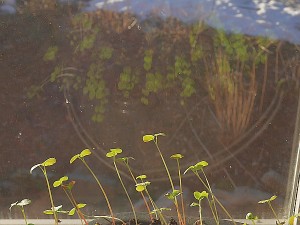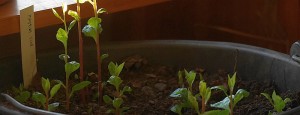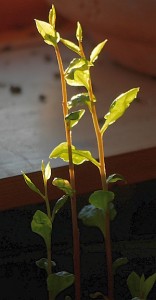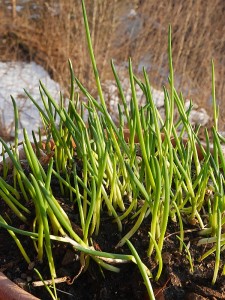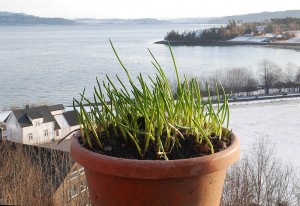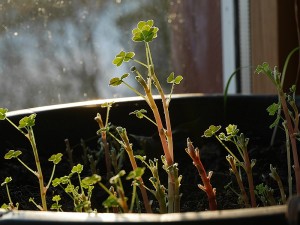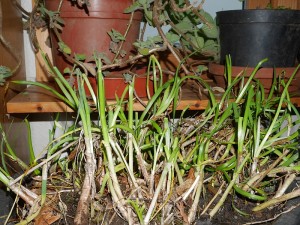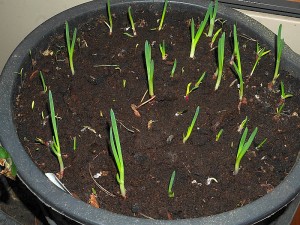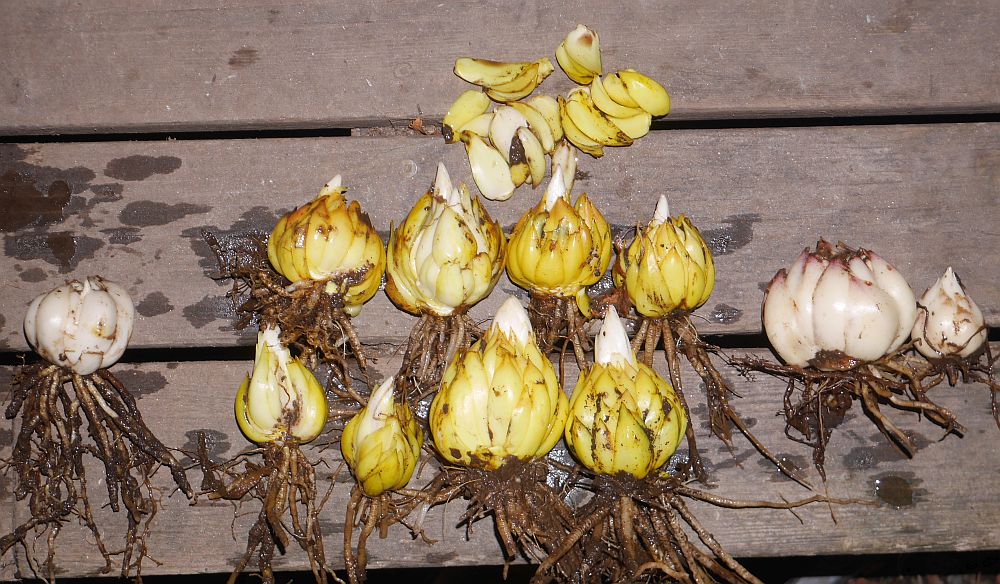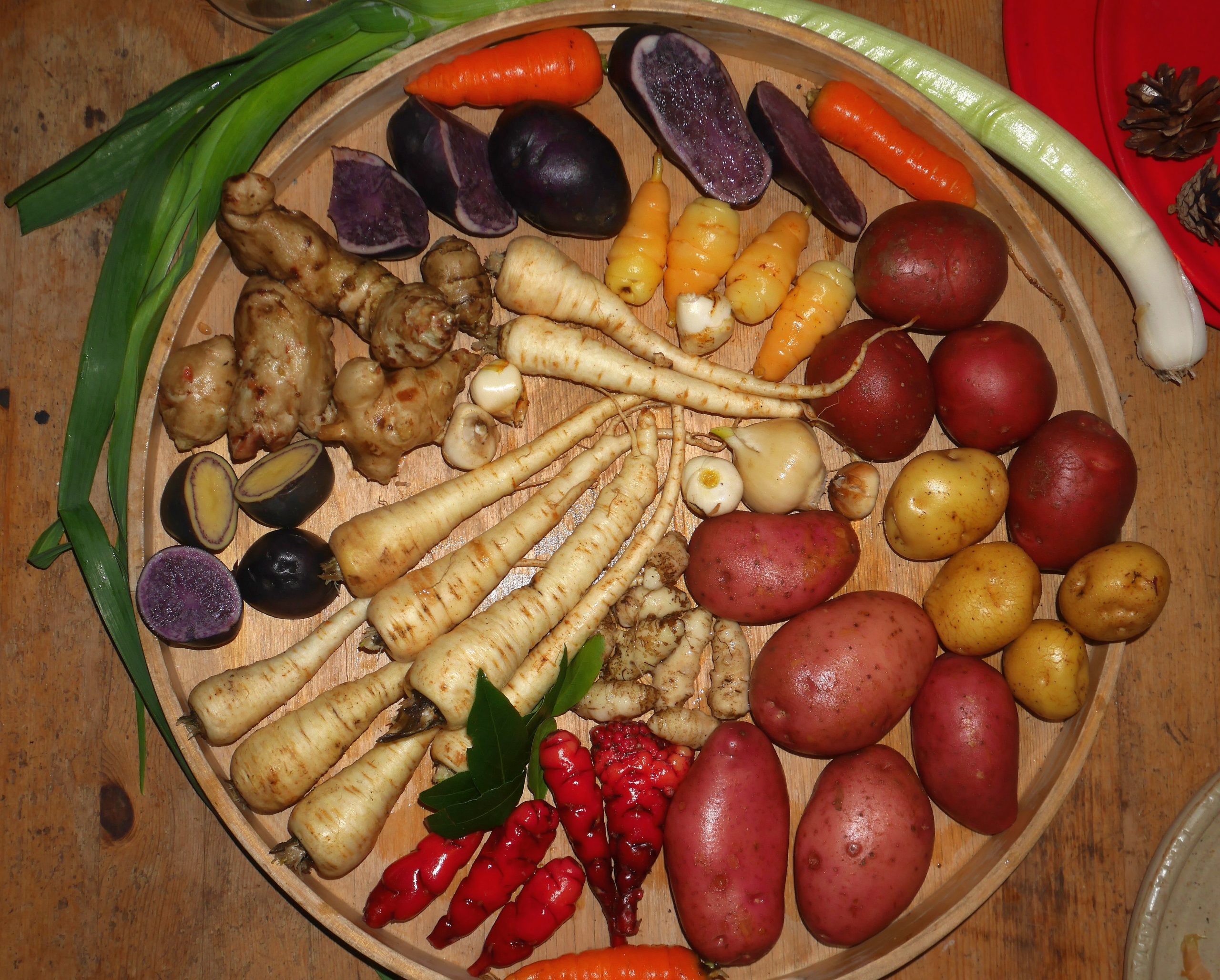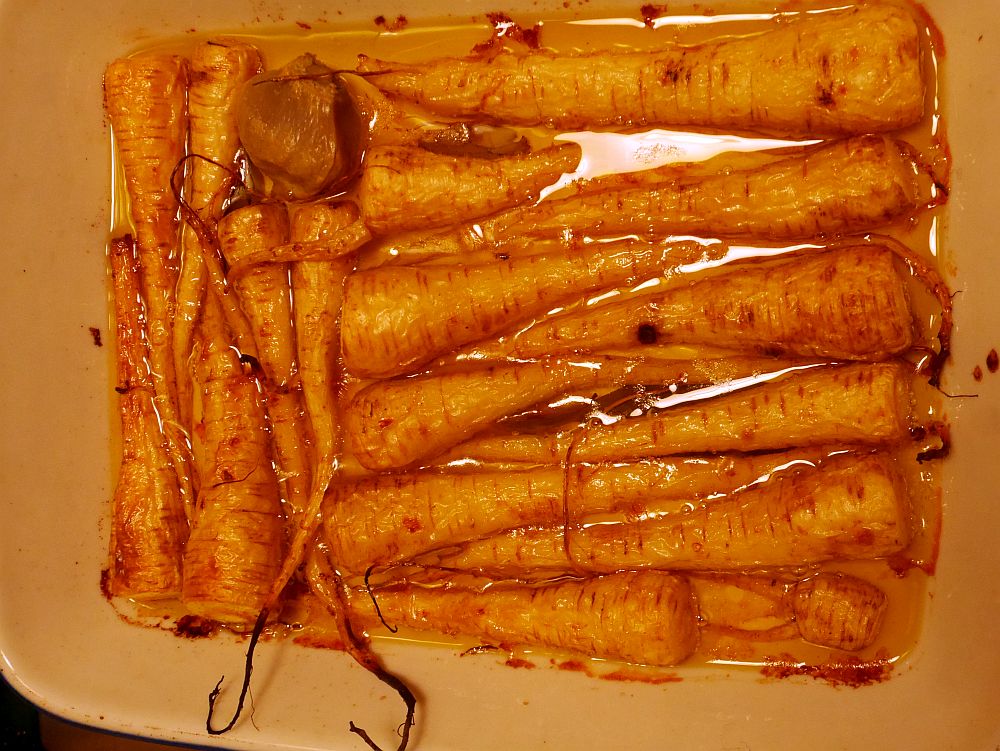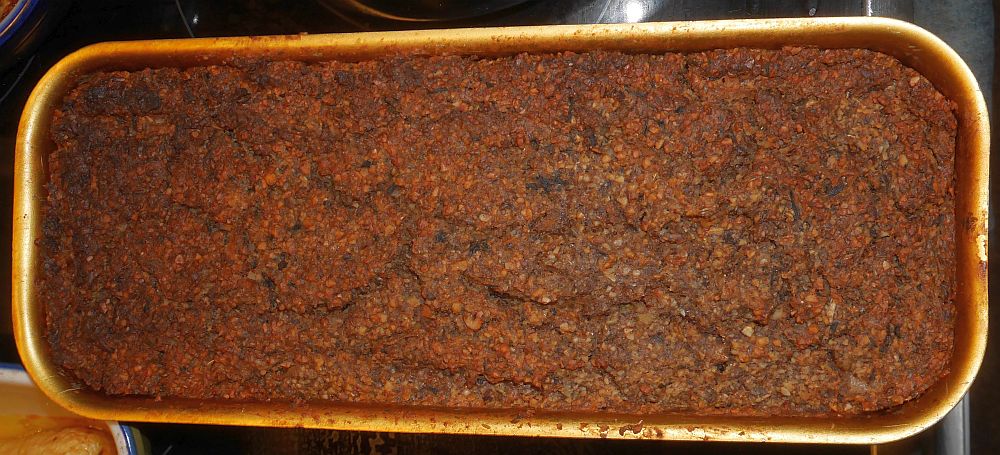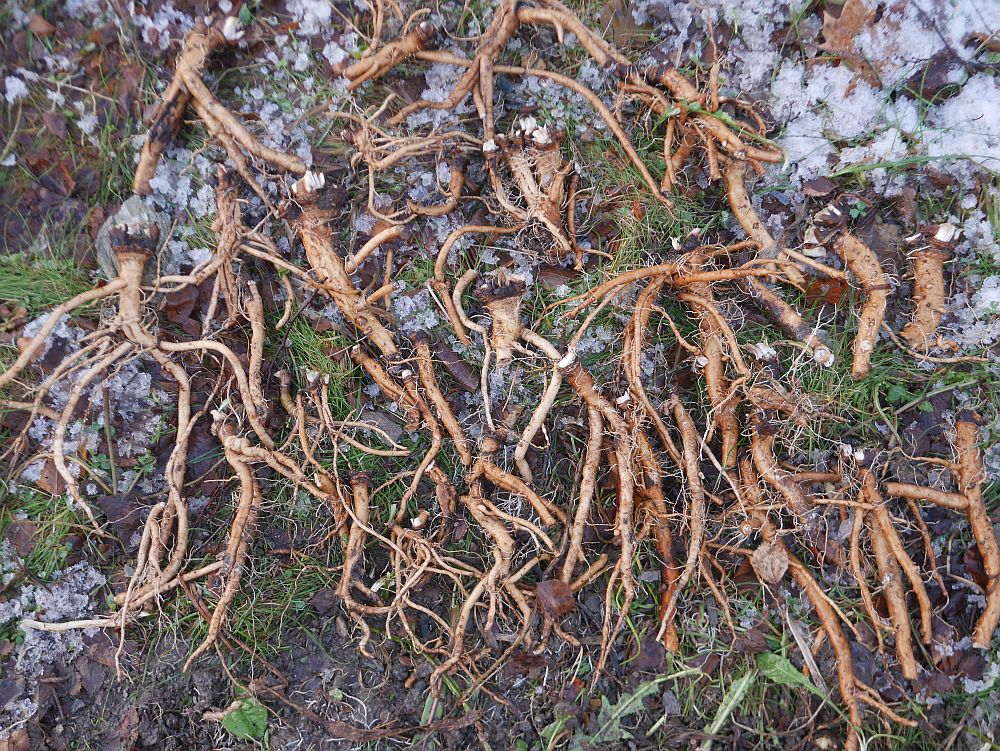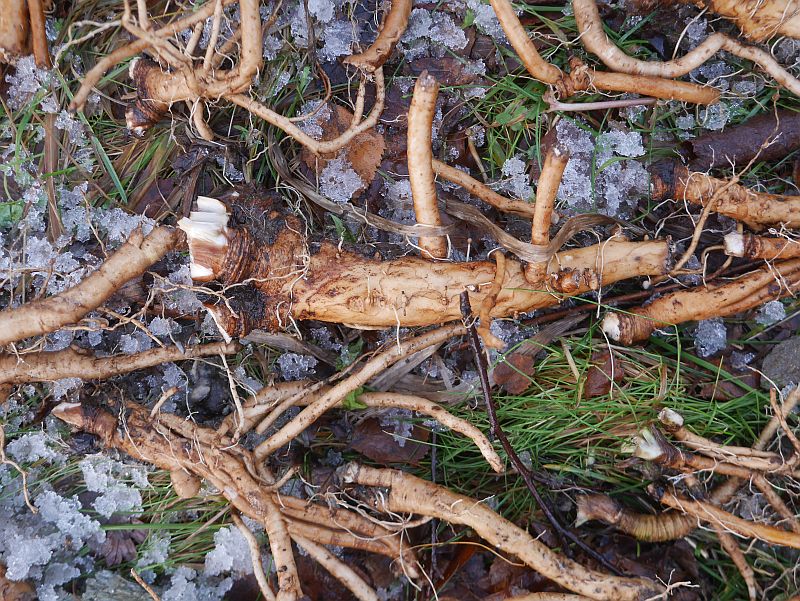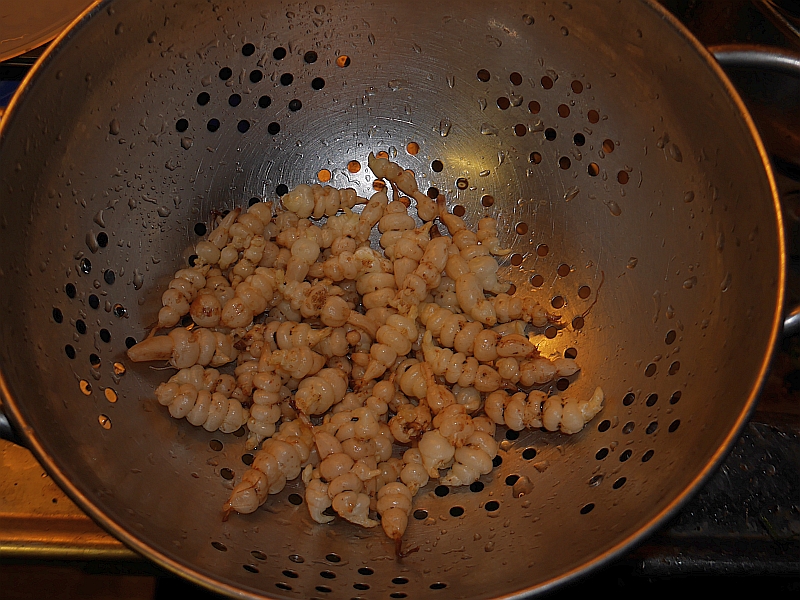We occasionally eat wild fish and bacalhau is a favourite made from Norwegian dried cod that can be found in supermarkets here. More or less anything goes in bacalhau (bacalao) and although most people make it in the same way – layers of potato, fish, tomato and onions, often with chili – the Portuguese have hundreds of ways of preparing baccalao (dried cod). Being self-sufficient, detailed recipes aren¨’t useful and we use whatever is available at the moment. Winter is the time for stored bulbs, corms, tubers, rhizomes, and taproots. See below the picture for yesterday’s baccalao ingredients with 14 home grown below surface storage organs plus some greens (I’m pretty sure nobody else had this version of the dish…ever!):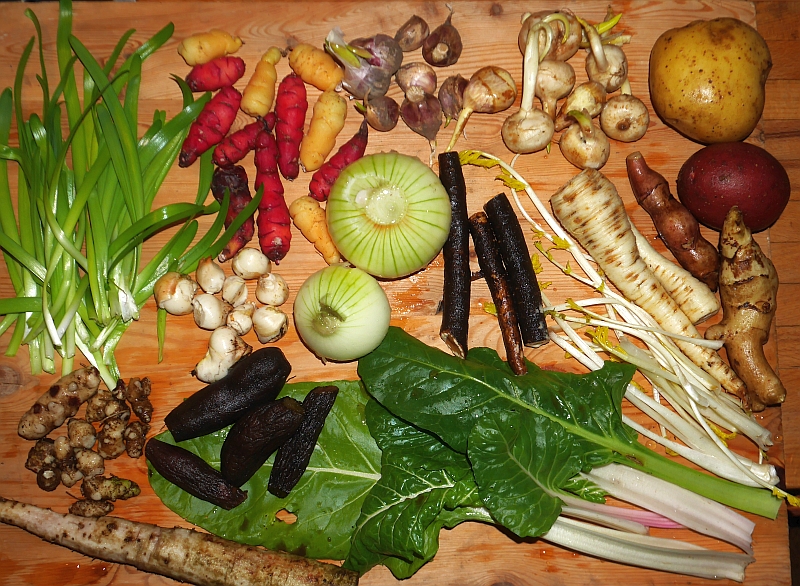
Oca (Oxalis tuberosa): yellow and red varieties
Garlic / hvitløk (Allium sativum)
Wapato (Sagittaria latifolia)
Potato / potet (Solanum tuberosum) – 2 varieties
Jerusalem artichokes / jordskokk (Helianthus tuberosus)
Parsnip / pastinakk (Pastinaca sativa)
Scorzonera / scorsonerrot (Scorzonera hispanica)
Common onion / kepaløk (Allium cepa)
Cacomitl (Tigridia pavonia)
Yacon (Polymnia sonchifolia)
Burdock / storborre (Arctium lappa)
Madeira vine (Anredera cordifolia)
Parsnip / pastinakk (Pastinaca sativa) shoots – had started shooting in the cellar
Leaf beets / bladbete (Beta vulgaris var. flavescens) – 3 varieties
Allium nutans (forced in the living room)
plus (not home grown) organic tomatoes, olive oil and olives
(I forgot the dandelion…will add tonight: we make enough that it lasts for several days….and the taste improves!)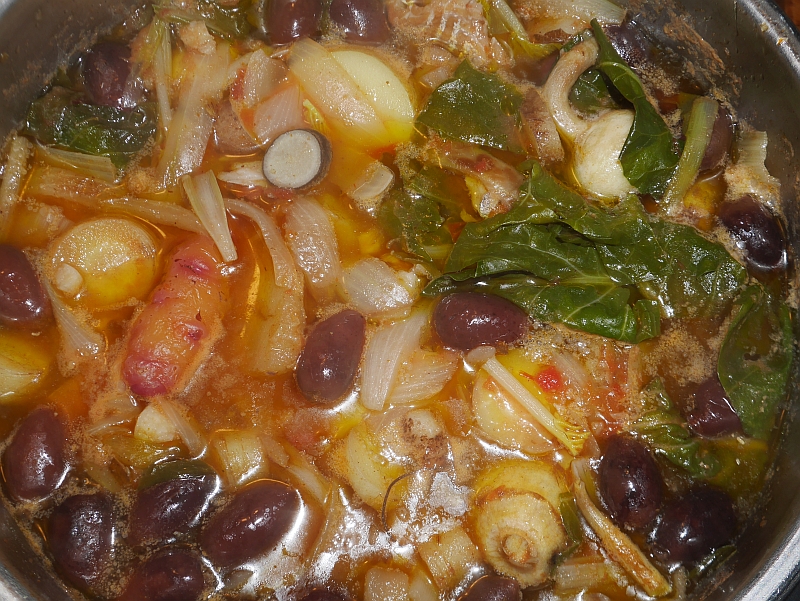
Tag Archives: Anredera cordifolia
Xmas day Rhizofantastigora dinner 2021
Xmas dinner in Malvik has been nut roast and roasted roots every year since 1984! This year there were 27 different roots: parsnip, 15 different varieties of potato, bulb onions, Tigridia (cacomitl), wapato (Sagittaria), carrot, beetroot, oca (red and yellow), Madeira vine (Anredera cordifolia), yacon (Polymnia), garlic (Allium sativum), Dioscorea polystachya (Chinese yam) and chicory root (at the top).
The nut roast was made from ground walnuts, hazelnuts and almonds with grated carrots, onion and beetroot with garlic, golpar (Heracleum seed spice), egg, salt, pepper and chili, bedecked with buckwheat groats (home grown by a friend in Czechoslovakia), Himalayan balsam seed, caraway, dill and alpine bistort bulbils (Polygonum viviparum).
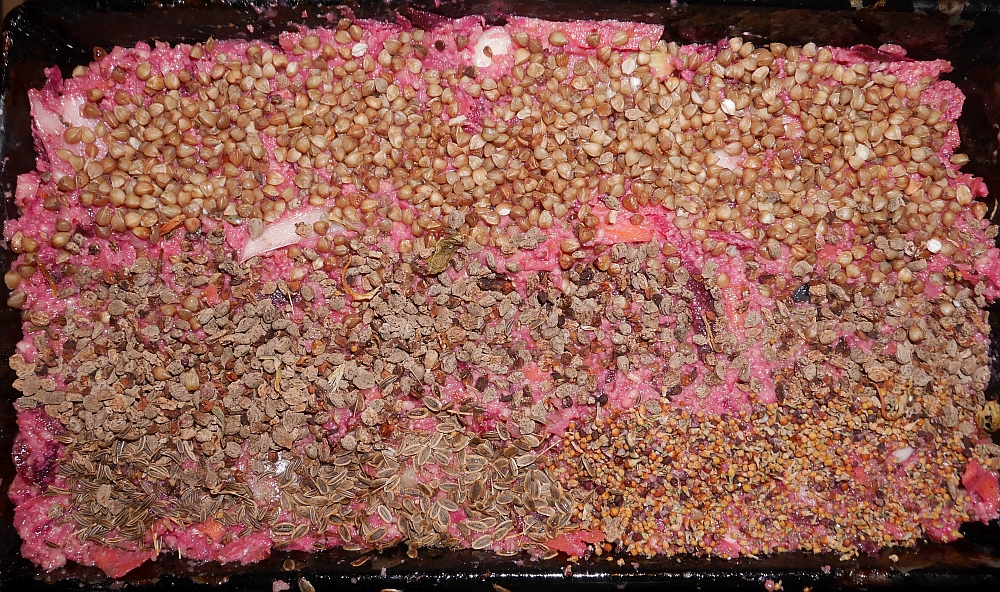
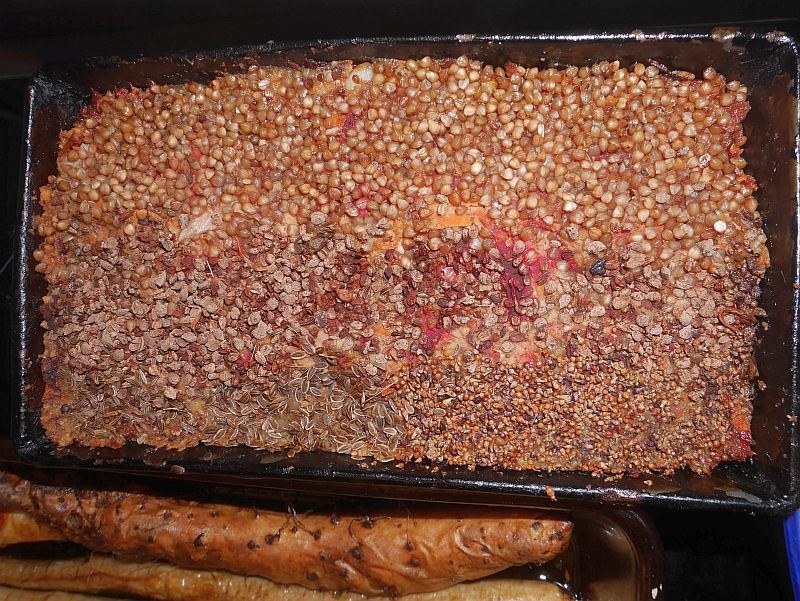

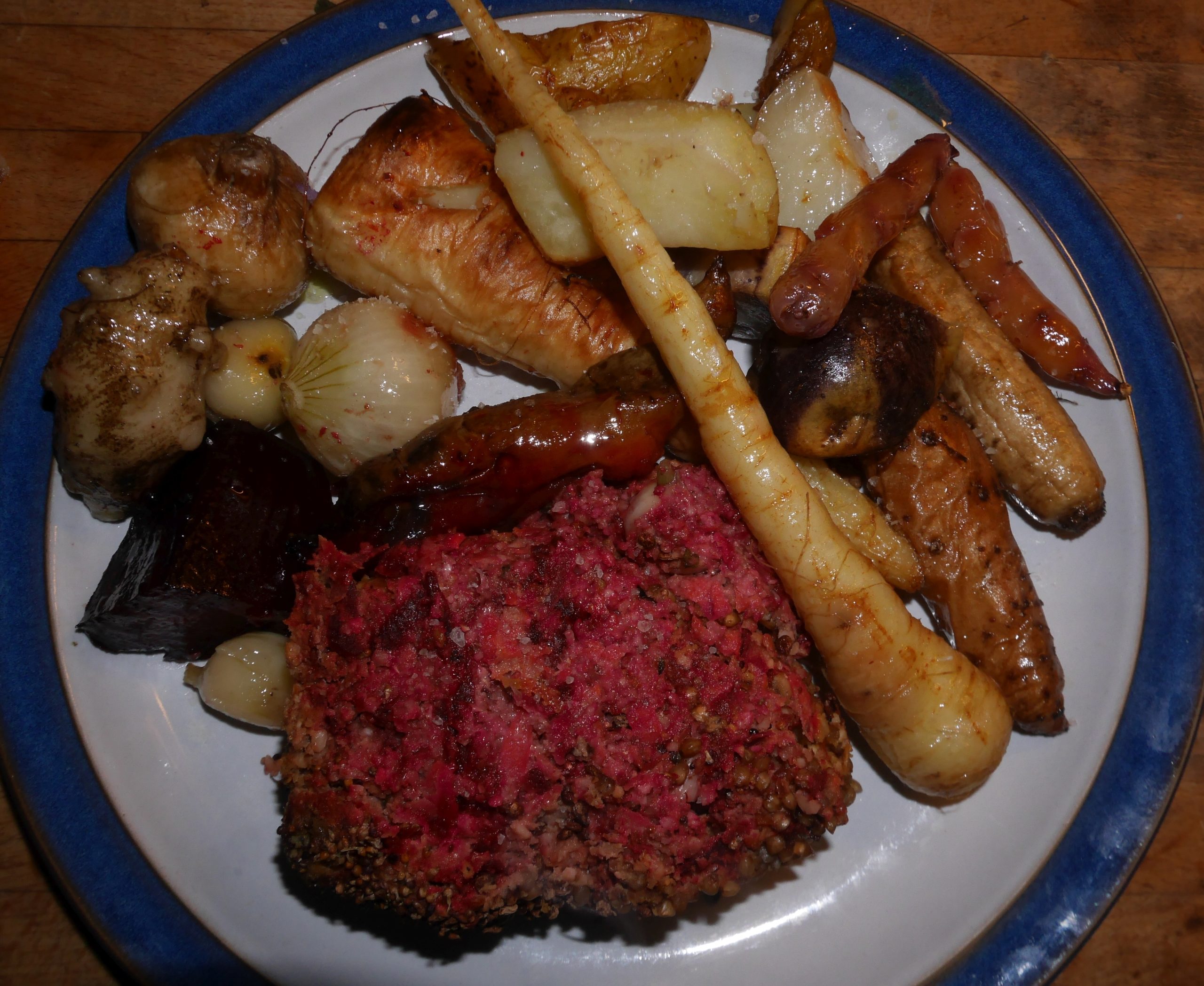
Tubers and roots; December 2020
A gallery of pictures of tubers and roots which were harvested in December when I had a blog-free month!
Yacon and Madeira Vine flowering outside
To my surprise, I noticed today that both yacon (Polymnia sonchifolia) and Madeira Vine (Anredera cordifolia) have managed to flower outside in the garden before I bring them inside for the winter just before the first frost. I’m surprised as the autumn has been colder than normal…maybe this is rather a consequence of the record warmth in June.
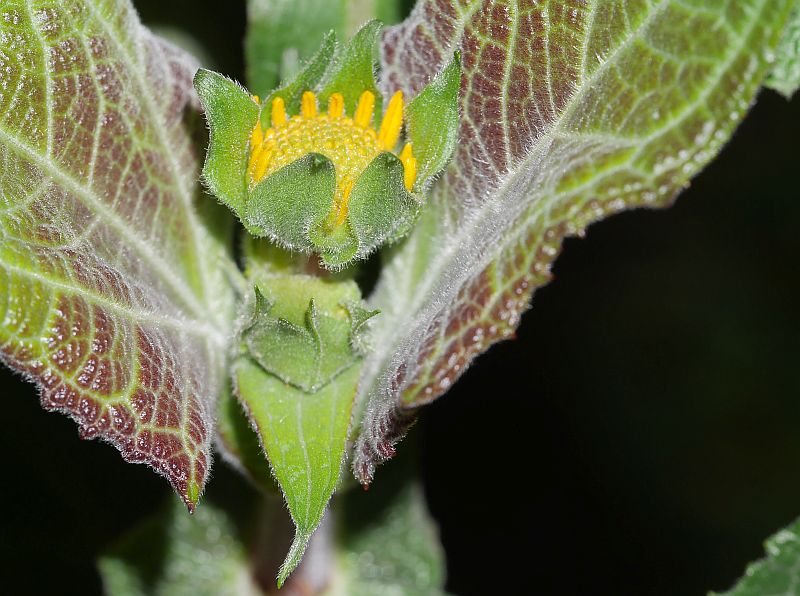
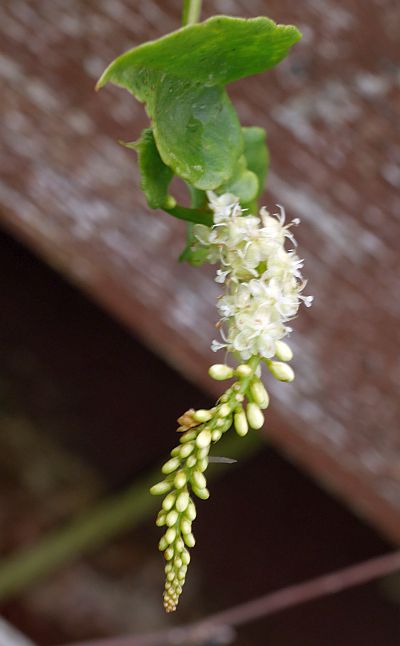
Jack-go-to-bed-by-noon/Chorogi/Madeira vine tuber harvest
All are now stored in the cellar.
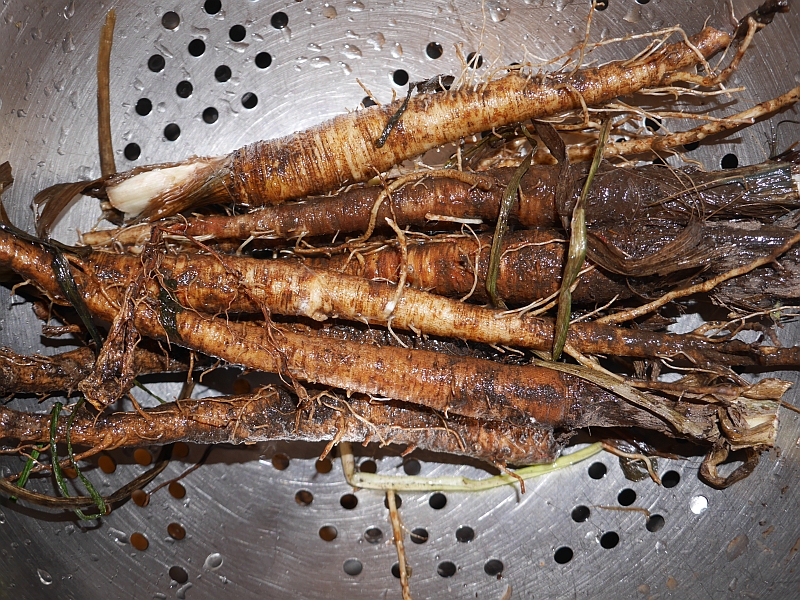
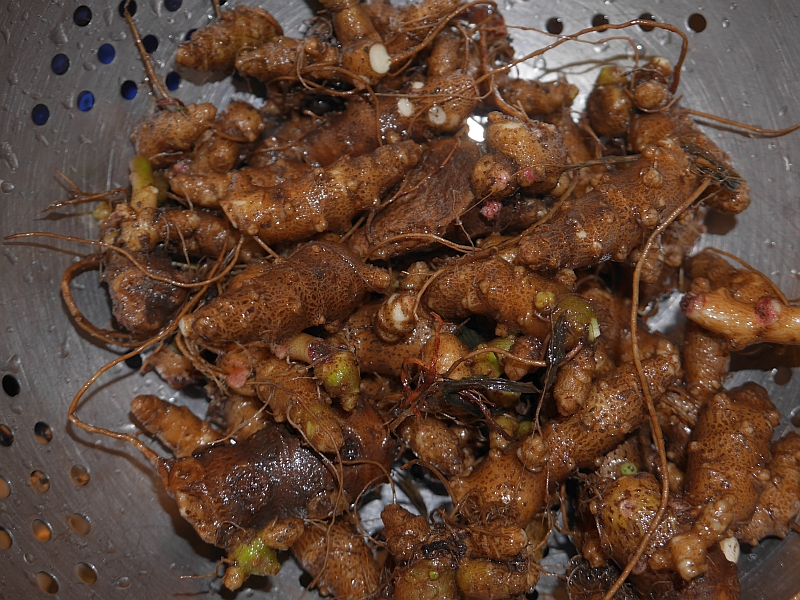
Malabar spinach in my bedroom….
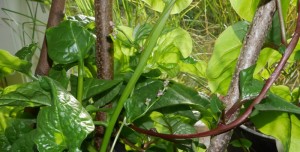

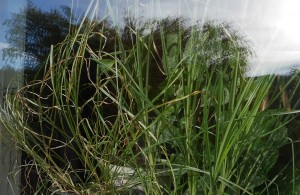
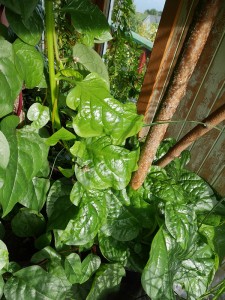
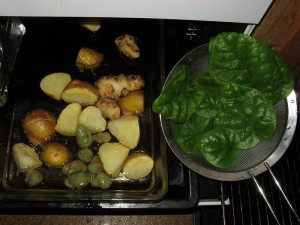
I have Malabar spinach (also known as Ceylon spinach or just Basella), a vigorous climbing spinach which isn’t hardy outside here, but grows very well and sets seed every years in an unheated bedroom, this year in my bedroom…should I be worried it might strangle me in its sleep?
It’s in the Basellaceae alongside Madeira Vine (Anredera cordifolia) and Ulluco (Ullucus tuberosus), both of which have both edible tubers and leaves… I actually included all 3 of these in Xmas dinner one year (picture below) :)
Malabar spinach can be harvested here – I usually take a few leaves and mix with other greens – from August right into the depths of winter, a great winter leafy green house plant! This year I have both green (Basella alba) and red-stemmed (Basella alba “Rubra”) varieties growing alongside each other…
I presume that Malabar is the area of southern India where it’s a popular vegetable and I look forward to making Malabar bhaji next time I make an Indian meal!
Norwegian sansai
From top left, left to right: Angelica archangelica “Vossakvann”, various dandelions / løvetann (Taraxacum), Rumex patientia (patience dock/hagesyre), Garlic bulbil shoots (forced indoors), ground elder / skvallerkål, Rheum palmatum (petiole), Rumex acetosa (sorrel / engsyre), Myrrhis odorata (with root ; sweet cicely / spansk kjørvel), chervil / hagekjørvel, Campanula latifolia (giant bellflower / storklokke), horseradish / pepperrot ( shoot), Anredera cordifolia (Madeira vine; grown inside), Alliaria petiolata ( garlic mustard / løkurt), Hemerocallis (daylily/daglilje), Ranunculus ficaria (lesser celandine / vårkål), Urtica dioica (nettle / nesle), Allium senescens x nutans, Hablitzia tamnoides (Hablitzia, Caucasian spinach / stjernemelde)…made into a stir fry with soba (buckwheat pasta)
Indoor edible shoots: my living room is alive!!

